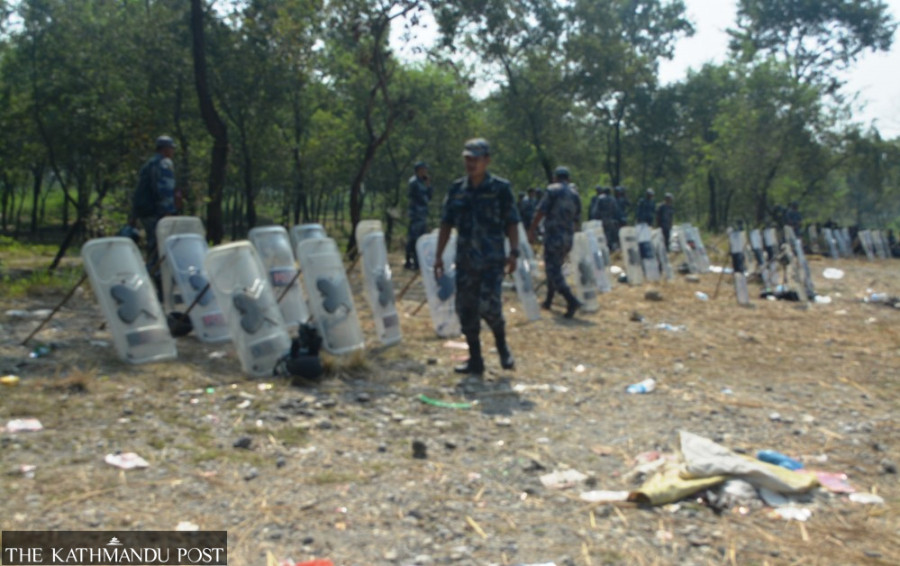Editorial
Tame the police
Great crimes have been committed in the name of maintaining law and order.
No matter how hard we have fought to establish democracy, our security apparatus continues to resist the natural process of evolution. At its core, the security apparatus is a repressive institution that thrives on brutality, domination and subjugation. This was evident in Rupandehi where, on Sunday, four people were killed in police firing and at least a dozen injured during a clash with squatters in the Motipur Industrial Area. At least five policemen were injured during the scuffle as they tried to clear out alleged encroachers from the industrial zone. As usual, the Nepal Police claimed it opened fire in self-defence; but the extent of the brutality, resulting in the loss of human lives, reveals how it considers the lives of citizens disposable.
The Rupandehi incident is yet another iteration of the criminal approach of Nepal's police administration towards security that normalises taming citizens through the use of brute force. That the police administration continues to believe its approach is justified shows how the mediaeval notion of justice and security based on brute power is deeply ingrained in the institution. It is no news that Nepal's police personally have deep-rooted racial, communal and linguistic biases. The brutality the police force showed against Madhesi protesters during the Madhes Andolan is self-evident. The government should conduct a detailed survey of various hues of biases among police personnel and bring policy changes based on the survey. If police personnel are seen to be exerting excessive violence on Madhesi protesters, it means that the officers of the law need to be sensitised on the need to remain unbiased. There is no denying that the Nepal Police, dominated mainly by a particular community, can be biased against another community. Such prejudice is, of course, not unique to Nepal.
Police bias is no new thing globally. In the United States, according to a research paper, white police officers dispatched to black neighbourhoods fired their guns five times as often as black officers dispatched for similar calls to the same neighbourhoods. A police shootings database maintained by The Washington Post shows that police shoot and kill around 1,000 people a year in the US, but officers hardly face the law for their excess. According to a report, since 2005, only 110 officers have reportedly been charged with murder or manslaughter, and only 42 officers have been convicted. This shows the extent of impunity that characterises a country considered the nerve centre of Western liberal democracy. Such excess calls for a multi-dimensional reform programme that includes the sensitisation of police officers on the need to respect differences of language, race, ethnicity, gender and religion.
The very idea that they can use violence against citizens is deeply problematic. If police personnel are using more force than is required, the institution should immediately sensitise them on the need to maintain restraint and take appropriate disciplinary action against them. If the lawmen think that they can shoot at anyone they like without reason and without fear of repercussion, there is something seriously wrong with the Nepal Police. There is, therefore, an urgent need for policy intervention to tame the police so that people no longer continue to be victims of police brutality. It is necessary to institute a system to ensure that the police officers who exhibit excessive brutality face disciplinary action. Despite years of campaigns by human rights activists, victims and civil society, the Nepali state has failed to solve insurgency-era cases of gross abuses of human rights. Such failures solidify the culture of impunity, which was on full display during incidents such as the clash in Rupandehi earlier this week.




 15.12°C Kathmandu
15.12°C Kathmandu














